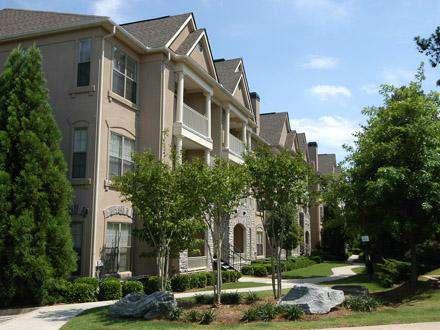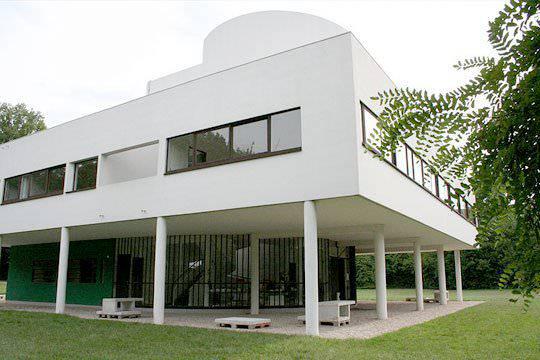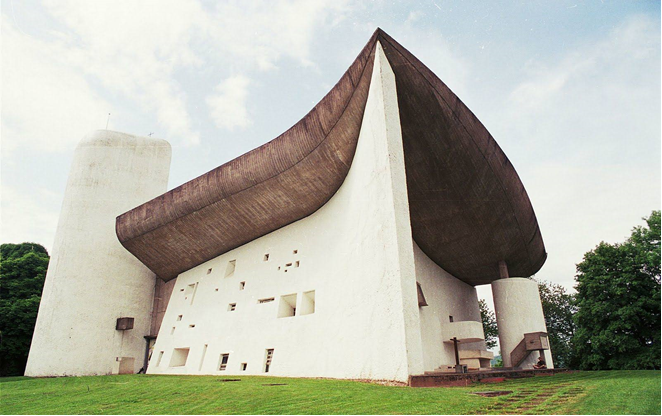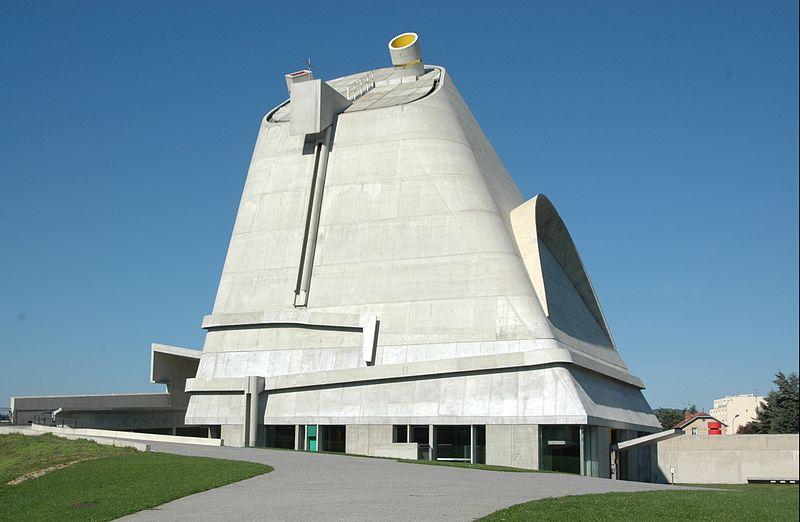Background of Le Corbusier Works that has Earned Him Criticism and Admiration
Le Corbusier is one of the most celebrated architects of the 20th century (Reyner 2961, p. 94). He was always critical of the exact role of an architect. In one of his statements, he noted that architects always find themselves at crossroads in most of their work. On one hand, there is the need to satisfy clients, while on the other hand there is always a need to ensure that the structure put up is functional. The dilemma comes when the client demands something unique that defies nature. They believe that architects have the capacity to design structures that is unique. This may be possible, but as he notes, functionality is a factor that cannot be ignored when putting up such structures.
Le Corbusier sees architecture as a way of thinking and a way of life that governs his action. He once described the art of architecture as a ‘machine of life’. This description has been interpreted differently by his admirers and critics. He was very articulate when giving this description. He said that the main role of architects is to provide safe structures in which people can live. The emphasis is, therefore, put on life. The machine must support life. However, not everyone has had a common view of this definition. To his admirers, they have been looking at this statement from the perspective of life, just as he stated. They argue that structures are supposed to offer people the opportunity to lead decent lives. To most of his critics, this statement has been viewed to mean that Le Corbusier overemphasizes on the functionality of the structures and ignored other relevant aspects of architecture. This research paper will critically analyze Le Corbusier’s architectural works, and determine what his admirers and critics thought about his view on the field of architecture.
One area that many of the contemporary architects have praised or criticized Le Corbusier for, is the vertical construction of buildings. According to Frampton (1992, p. 37), the land is a precious asset that has to be used sparingly. The growing population means that there is a need to put up more structures to sustain the growing population. The problem is that when such structures are crammed within a small space, it causes congestion, leading to a slum-live lifestyle. Le Corbusier held that the work of architects was to provide good living conditions to people by providing housing units that meet the relevant standards. For this reason, he challenged construction that was crowded close together, limiting the space for other recreational facilities. The figure below demonstrates when Le Corbusier detested an architect’s work.

Le Corbusier always insisted on the value of space. He would say that one of the leading roles of architects is to maximize the available space maximally in order to meet the demand of the population while still avoiding crowded buildings. Such buildings as those shown above demonstrate a lack of thinking in the designers. For this reason, he tried finding a better solution that would help eliminate such crowding. The building below is based on his principle which held that as architects strive to achieve functionality and glamour in their work, they must have concern for the environment.

To this end, the researcher believes that Le Corbusier was right. Land space is increasingly becoming scarce, and the use of vertical space can help in maximizing the little space that exists. While the building takes into account the increasing demand for housing by using the vertical space, it is also apprehensive of the beauty of nature by limiting the need to use more land area. As Moos (2009, p. 74) notes, some scholars have accused Le Corbusier of having ignored some of the architectural concerns when coming up with such designs.1 However, he has been able to prove some of his critics wrong. In modern society, architectures have come to appreciate that vertical space is the only solution to the increasing concern for the land. It offers an opportunity where a space that would have been used by one family is used by several families. Both critics and admirers of Le Corbusier agree that he was right on the need to maximize the vertical space.
According to Jencks (1985), Le Corbusier was largely influenced by the works of engineers. Le Corbusier himself admitted that he admired the work of engineers, especially in designing automobiles. He noted that the engineers would dedicate their time to ensure that they develop structures that have speed, comfort, and luxury. He insisted that this should be translated to the work of architects. This could be the main reason why he described his architectural works as machines of life. He believed that he had to offer efficiency, comfort, and security when designing structures. The figure below is Villa Savoye that he designed weeks before the accident that claimed his life. The design was implemented several decades after his death and most of the architects who have had the opportunity to read the design have described it as a marvelous work.

By the time of his death, Le Corbusier had seen the benefit of technology, and how it could be used in this field. Despite his age, he was quick to learn the relevance of technology in this field, ad develop designs that were beyond human understanding. The structure above is a true reflection of the philosophy held by Le Corbusier on how architects should design their structures. The building seeks to replace the need for horizontal space by making use of the vertical space. This way, it is possible to use the remaining space to beautify the atmosphere within the building. The researcher appreciates this approach because it has proven valuable to modern architects.
Relevance of Le Corbusier’s Works in the Modern Architecture
As Taylor (1987, p. 23) notes, Le Corbusier passed away over four decades ago, but his works have remained alive in the field of architecture. As most of his admirers have noted, Le Corbusier provided a basis upon which modern architecture is based. The population of the world is constantly on the rise, and the majority of this population prefer living in the cities. In both developed and developing nations, there has been a major problem of housing. This has forced some part of the population to live in deplorable housing units in slums such as the one shown in figure 1 above. Le Corbusier must have realized that this problem would get worse as the majority of people around the world preferred staying in cities. He, therefore, proposed high-rise buildings instead of putting up large structures that are not conscious of the vertical space. This philosophy is the only solution that modern architects have in order to sustain the rising demand for housing units. Both critics and admirers of Le Corbusier agree that this philosophy cannot be ignored when addressing housing problems in major cities across the world.
According to Le (2008, p. 92), “Good architecture cannot force people to live together in harmony, but bad architecture can certainly prevent them from doing so.” This was in reference to some of the designs that Le Corbusier for government workers. The flats were high-rise buildings that were designed to allow people to stay independently, without affecting their neighbors. As Taylor (1987, p. 82) notes, however, these designs were seriously affected by greed and the self-centered approach taken by the country’s leadership when implementing the design. The result was disastrous blocks of houses that could not bring harmony among the inhabitants. This was specifically because of the issues such as waste management and the shared equipment. Le Corbusier made it clear to the public that his original concept was ignored. This original concept visualized high-rise buildings with self-sustaining apartments. In such apartments, residents would have all that they needed within their units, without the need to share other facilities. The researcher believes that this concept should be the basis of designing modern-day urban centers.
As Bacon (2001, p. 110) notes, in order to bring harmony in a society that is capitalistic in nature, it is always necessary to create independence among the society members.2 This way, each individual would be responsible for everything that takes place within his facility. As architects, it has become very relevant to come up with housing units that promote independence among residents, despite the increasing demand for space. A critical view of the design of some of the cities across the world proves that Le Corbusier has visualized the future. Some of the designs he developed over four decades ago have been considered appropriate in achieving this independence among housing units. Some of his admirers have stated that Le Corbusier has made it possible to use limited space to develop structures that promote independence among the residents, thereby encouraging harmony. Most of Le Corbusier’s critics have appreciated the relevance of his humanistic approach in designing cities, though they claim that his vision was too abstract to be put to practice.
Beauty and functionality are some of the most important factors that Le insisted on in most of his works. He would make reference to the work of automotive engineers when designing cars. A client would want a beautiful car with unique features. As an engineer, it would be important to provide this beauty. However, it is important to ensure that this beautiful product is also functional. The customer would also demand for maximum comfort in their cars. However, this comfort must be offered to take into account the need for efficiency. Some of these needs are contradictory in nature, but an engineer would try to eliminate this contradiction by providing a car that is efficient, comfortable, beautiful, and functional product. Similarly, architects have a role to provide structures that are functional, safe, beautiful, and comfortable for the users. He designed the chapel below was out of the admiration of the automotive engineers.

Le Corbusier would insist on these qualities when architecture is developing any form of structure. In the contemporary world, these factors still remain relevant. They are still contradictory, but it is the work of the architect to provide what the client needs despite this contradiction. A client would offer a small space, but demand for a bigger house. Taylor (1987, p. 82) says that Le Corbusier’s philosophy would be useful in meeting such demands. In his book, ‘Towards a New Architecture,’ Le challenges members of his own profession. The researcher shared Le Corbusier’s’ view that in order to succeed as an architect, it is important to understand the needs of clients, and develop a unique in which such a need would be met without compromising on the functionality of the structure.
Criticism of Le Corbusier Works
Although many architects and scholars have generally considered Le Corbusier as an icon in the field of architecture, others have accused him of radical approaches in architecture that have failed to pass the test of time. According to Nikolaus (1974, p. 78), the works of Le Corbusier have played a major role in giving insight to the design of the modern cities.3 However, most of his designs to not were either meant to disrepute architectural designs of early architectures, or to please the leadership of his country. This scholar says that Le Corbusier overemphasized on the use of concrete materials on structures. Concrete are good materials. However, the problem is that this material cannot be used to achieve uniformity as Le Corbusier was trying to suggest. The design of Church of Saint-Pierre has earned Le Corbusier a lot of criticism. The church was built based on the principles proposed by Le Corbusier. However, the design of the church has been considered to have many shortcomings that would not make it pass as a standard architectural work. The main auditorium of the church used excessive concrete, limited the amount of light into the hall. The raw concrete that was used in this building, as was proposed by Le Corbusier, is less appealing. The figure below shows Church of Saint-Pierre that was designed by Le Corbusier

According to Bacon (2001, p. 28), Le Corbusier was an accomplished architect who was keen on redefining various architectural designs that were being used at his time. However, he states that just like any other great architect, Le Corbusier had his own shortcomings. This scholar has been very critical of Le Corbusier’s clamor for uniformity in architectural design. He blames this line of thinking to Le’s love for automobiles. It was very creative for Le to come up with new structural designs, some of which resembled cars. However, it is also important to appreciate that creativity cannot be uniform. Moos (2009, p. 89) says that Le had an independent mind, and that is why he was able to come up with new designs that had not existed before. However, his attempt to introduce uniformity in designs was not only ironical because of his ideologies, but retrogressive in nature. An architect’s mind should not be clipped by the need to have standardized structures. Architects should be allowed to use the basic principles to develop structures that are unique. It is only through this that the field of architecture would be given the opportunity to explore new ways.
The world is changing rapidly due to changes brought about by technology. Architectures must understand this changing environment and develop structures that are sensitive to these changes. Proposing a rigid structural design that emphasizes a particular design is ignoring the dynamic society. Le was sensitive to the changing environmental forces. That is why he designed high-rise buildings for cities in this country and explained that it was the solution to the increasing demand for land space. It is, therefore, unfortunate that he refuses to accept the fact that this dynamism is for the future generation. He ignores the need for the future generation to develop their own systems that will be conscious of the changing environmental concerns (Weber (2008, p. 88). His approach was useful in helping the current generation.4 However, the changing factors in the environment cannot sustain uniformity. Unlike cars, Taylor (1987, p. 37) says that buildings should always be based on the needs of the client. Architecture should be able to design something unique that meets the demands of the client. This means that uniformity does not go hand in hand with creativity. The creative mind should be given limitless space of coming up with independently unique structures.
Moos (2009, p. 39) has been very critical of Le’s city designs, especially his housing project in major cities in France. This scholar notes that Le failed to understand the need for the poor and the rich to integrate freely in an environment that allows both groups to understand the needs of the other. Instead, he came up with a project that separated the poor from the rich. The housing designs were considered great because it helped solve the problem of the rising demand for housing. However, it introduced a system where the rich and the poor lived in different worlds, though within the same city. Taylor (1987, p. 57) says that these projects largely isolated the poor, inhibiting the social integration that existed before. The new housing units, largely described as monolithic high-rises, provided the community’s aristocrats with an opportunity to lead independent lives away from poorer members of the society.
Bacon (2001, p. 14) has argued that Le Corbusier’s skyscrapers were not very relevant at that time, and what he was interested in was to demonstrate the power of technology. This scholar says that some of the skyscrapers that were designed by Le Corbusier ignored the financial feasibility, something that modern-day architecture is not supposed to do. Technology is powerful, and with it, architects find it easy to come up with unique structures. However, it is always important to ensure that such structures meet financial feasibility tests as a way of protecting the client’s interest. Le Corbusier overemphasized the skyscrapers even in cases when it was not necessary. The cost that would be involved in undertaking such construction would be unreasonably high. However, Le Corbusier would go ahead and implement such designs simply because technology had made it possible. This, according to Weber (2008, p. 50), is not only unethical but also an illegal act based on architectural standards. High-rise buildings in modern society are very important. However, overemphasizing their construction even when the feasibility test shows otherwise is unrealistic and unethical of a professional architect.
Conclusion
Le Corbusier has been considered the most accomplished architect of the twentieth century. His works have had a massive impact on modern architecture, especially his design of modern cities. He was very conscious of the limited land space, and the increasing demand for housing units. He designed high-rise buildings as a solution to the rising population in the cities. He believed that the vertical space had not been utilized, and given the scarcity of land, it was the right time to tap into it. Although he has received a lot of criticism among a section of the modern architects, it is a generally accepted fact that he laid a foundation for the modern city designs in most parts of Europe.
List of References
Bacon, M 2001, Le Corbusier in America: Travels in the land of the timid, MIT Press, Cambridge.
Frampton, K 1992, Modern Architecture: A Critical Theory, Thames and Hudson, New Jersey.
Jencks, C 1985, Modern Movements in Architecture, Penguin Books, New York.
Le, C 2008, Toward an architecture, Frances Lincoln, London.
Moos, S 2009, Le Corbusier, elements of a synthesis, 010 Publishers. Rotterdam.
Nikolaus P 1974, Pioneers of Modern Design: From William Morris to Walter Gropius, Penguin Books, New York.
Reyner, B 2961, Theory and Design in the First Machine Age, Butterworth Architecture Press, London.
Taylor, B 1987, Le Corbusier, the City of Refuge, Paris 1929/33, University of Chicago Press, Chicago.
Weber, N 2008, Le Corbusier: A life, Alfred A. Knopf, New York.
Church of Saint-Pierre, Firminy.
Footnotes
- Moos, S 2009, Le Corbusier, elements of a synthesis, 010 Publishers. Rotterdam, 74.
- Bacon, M 2001, Le Corbusier in America: Travels in the land of the timid, MIT Press, Cambridge, p. 110.
- Nikolaus, P. 1974, Pioneers of Modern Design: From William Morris to Walter Gropius, Penguin Books, New York, p. 78.
- Weber, N 2008, Le Corbusier: A life, Alfred A. Knopf, New York, p. 88.